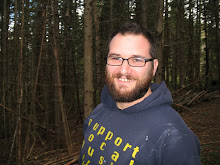
Pictured is my small collection of timberframing tools. I've been gathering tools to use in the construction of my new house and these are most of the hand tools I'll need for the joinery in the 8x8 and 6x8 framing members. Most of these tools are antiques that I purchased on-line and refurbished as required. From the bottom are the following: 1-1/4" White chisel circa 1837. This one was in great shape and just needed a good sharpening to bring it to life. Next is an Ohio King 1" corner chisel to clean up the mortises. This chisel is also in great shape and as soon as I figure out the best way to sharpen it it will be ready to go. The 2" framing chisel needed a bit more work. This one took considerable flattening and grinding to get the edge to usable condition. Also, the handle it came with was not the greatest and didn't look like it would stand up to the abuse of pounding out mortises. I turned a new handle in ash from a baseball bat from my childhood and gave it a copper ferrule. It's now sharp enough to shave with. Next is my brand new 2-1/2" slick from Barr Specialty Tools. This is a real prize. I tried for months to find an antique slick in decent shape and for a decent price but most of them were very expensive. This hand forged chisel, complete with a bird's eye maple handle is just a joy to look at and to hold and I'm really happy that I went this route. Next is an inexpensive Ryoba that I bought at Lee Valley. This Japanese saw has both rip and crosscut pattern teeth and will get lots of use in the cutting of the frame; plus, if it gets bent or beat up it's no great loss and the blade is actually replaceable. Next up is an antique Enderes drawknife that I'll use to ease all the corners of the timbers. Doing it this way rather than with a rotor gives the frame a less formal feel and speaks to the handwork that goes into this type of project. Also pictured are two handplanes. One is a small block plane that I made a number of years ago. It's a fairly rough little customer but is great for quickly knocking off corners, especially on the large tenons before fitting. The other plane is a Stanley #191 shoulder plane that I'll use to clean up any tenon shoulders that need it. Finally, at the top right of the photo is a freshly turned maple mallet to drive those chisels deep into the pine. Take a good look because it'll be beaten to hell before too long! There are a few more things I'll use in the frame cutting process. These will most likely include a large (16-5/8"... no kidding) circular saw, a western style crosscut saw, an electric plane and my trusty belt sander. But hey, they're not nearly as photogenic as that beautiful Barr Slick eh?

















